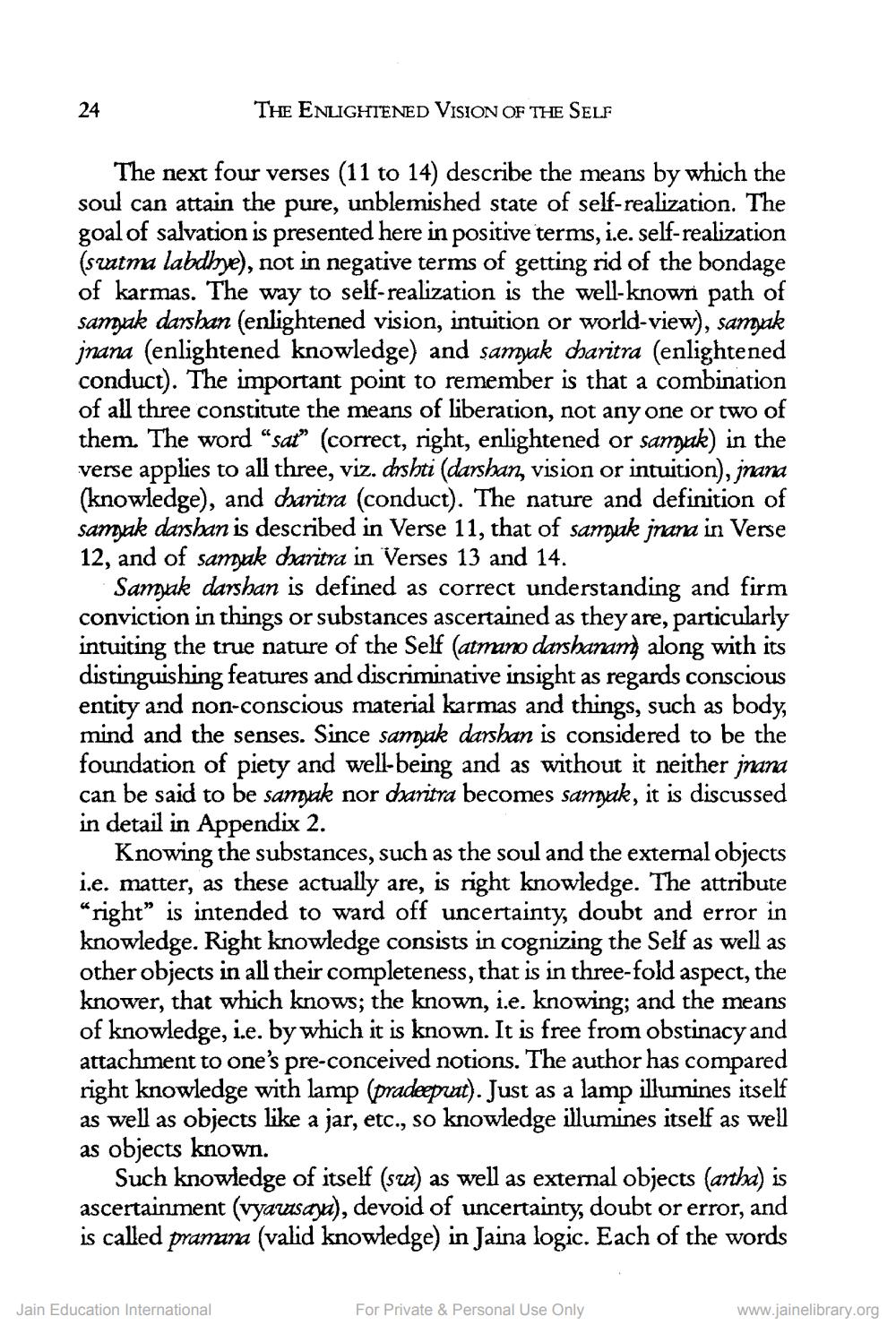________________
24
THE ENLIGHTENED VISION OF THE SELF
The next four verses (11 to 14) describe the means by which the soul can attain the pure, unblemished state of self-realization. The goal of salvation is presented here in positive terms, i.e. self-realization (szatma labdhye), not in negative terms of getting rid of the bondage of karmas. The way to self-realization is the well-known path of samyak darshan (enlightened vision, intuition or world-view), samyak jnana (enlightened knowledge) and samyak charitra (enlightened conduct). The important point to remember is that a combination of all three constitute the means of liberation, not any one or two of them. The word "sat" (correct, right, enlightened or samak) in the verse applies to all three, viz. drshti (darshan, vision or intuition), jnana (knowledge), and charitra (conduct). The nature and definition of samyak darshan is described in Verse 11, that of sampuk jnana in Verse 12, and of sanjak dharitra in Verses 13 and 14.
Samyak darshan is defined as correct understanding and firm conviction in things or substances ascertained as they are, particularly intuiting the true nature of the Self (atmano darshanam along with its distinguishing features and discriminative insight as regards conscious entity and non-conscious material karmas and things, such as body, mind and the senses. Since samyak darshan is considered to be the foundation of piety and well-being and as without it neither jnana can be said to be samak nor charitra becomes sangak, it is discussed in detail in Appendix 2.
Knowing the substances, such as the soul and the external objects i.e. matter, as these actually are, is right knowledge. The attribute "right" is intended to ward off uncertainty, doubt and error in knowledge. Right knowledge consists in cognizing the Self as well as other objects in all their completeness, that is in three-fold aspect, the knower, that which knows; the known, i.e. knowing; and the means of knowledge, i.e. by which it is known. It is free from obstinacy and attachment to one's pre-conceived notions. The author has compared right knowledge with lamp (pradeeprat). Just as a lamp illumines itself as well as objects like a jar, etc., so knowledge illumines itself as well as objects known.
Such knowledge of itself (sva) as well as external objects (artha) is ascertainment (vyavsaja), devoid of uncertainty, doubt or error, and is called pramana (valid knowledge) in Jaina logic. Each of the words
Jain Education International
For Private & Personal Use Only
www.jainelibrary.org




